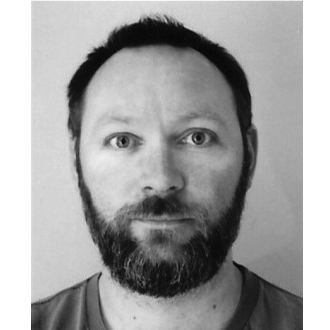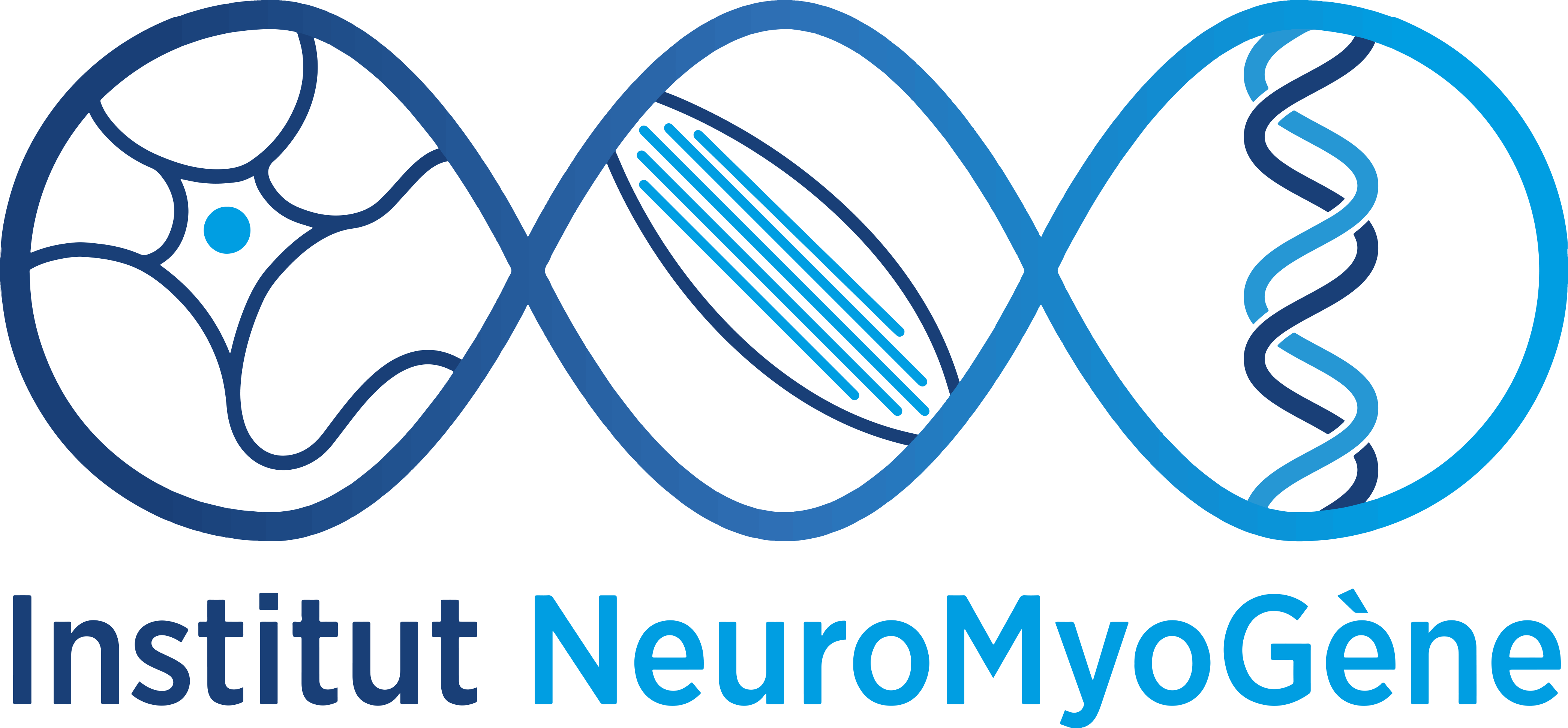Our team aims to understand, in the model of skeletal muscle fibers, mechanisms controlling genome expression, cytoskeleton rearrangements and nuclear domain establishment and their implication in pathological contexts such as genetic disorders (Emery-Dreifuss Muscular Dystrophy and Centronuclear myopathies) or physiological aging (Sarcopenia). We also aim, in the model of cardiomyocyte, decipher implication of mutations identified in cardiomyopathies such as inherited hypertrophic cardiomyopathies (HCM), Atrial fibrillation (AF) or Arrhythmogenic right ventricular cardiomyopathy (ARVC).

TEAM
- Vincent GACHE
CRCN INSERM, HDR - Caroline BRUN
CRCN INSERM - Carole KRETZ-REMY
PU UCBL1, HDR - Gaelle BONCOMPAIN
DR CNRS, HDR - Fanny STORCK
PU VetAgroSup, HDR - Justine GUGUIN
Post-doctorant (ANR & FRM) - Vincent LOREAU
Post-doctorant (France 2030) - Lea CASTELLANO
PhD student (ED-BMIC-UCBL1) - Vanessa DEL VITO
PhD student (HCL) - Marine DAURA
PhD student (ANR) - Tanushri DARGAR
PhD student (VetAgroSup) - Anna RAUSH DE TRAUBENBERG
PhD student (ANR) - Damien CAILLOL
PhD student (AFM) - Emilie CHRISTIN
AI UCBL1 - Ludivine ROTARD
PhD student (ED-BMIC-UCBL1) - Marie ABITBOL
PU VetAgroSup, HDR - Pauline GODDARD
Ingénieure d’étude - Philippe CHEVALIER
PU-PH UCBL, HDR - Alexandre JANIN
MCU-PH UCBL - Gilles MILLAT
MCU-PH UCBL - Justine VIGNON
Master 2 - Catarina PLACIDO DA ROCHA
Master 2 - Justin ROUVIERE
Master 1 - Agathe LEDDET
Master 1

PROJECTS
Evolution of the microtubule proteome and its involvement in the formation and maintenance of nuclear domains (MNDs) during skeletal muscle development (Leader: Dr. Vincent Gache)
The nuclei actively position themselves throughout muscle development. Extensive data support a direct connection between the regulation of nuclear domains, the maintenance of microtubular architecture in muscle fibers and normal muscle function. The microtubule network is completely restructured during muscle formation. We hypothesized that differences between the microtubule-associated proteome in immature and mature fibers contribute to (1) microtubule reorganization and (2) nucleus localization. We have developed a strategy to isolate and analyze these two proteomes using an original in vitro system that allows the formation of pure “mature” muscle fibers. This strategy led to the selection of nearly 500 candidates that we are currently studying using a siRNA screening approach using primary murine/human muscle cells.
Deciphering the signaling pathways regulated by the primary cilium in muscle stem cells (Leader: Dr. Caroline Brun)
The function of skeletal muscle tissue relies on the maintenance and regeneration of myofibers through a finely regulated process. It begins with the activation of normally quiescent muscle stem cells (MuSCs) and continues with the proliferation of MuSCs which differentiate to repair damaged fibers or self-renew and return to quiescence to restore their stock. Loss of function of MuSCs inevitably leads to muscular disorders, such as neuromuscular diseases, equating to poor quality of life, loss of independence and increased morbidity/mortality. Thus, a thorough understanding of the fundamental biological processes regulating MuSCs will ensure the success of stem cell-based regenerative therapies. We propose different experimental approaches aimed at deciphering the signaling pathways regulated by the primary cilium of MuSCs in physiological and dystrophic contexts.
Modulation of skeletal muscle integrity in healthy and pathological contexts (Leader: Dr. Carole Kretz-Remy)
The functioning of the muscle fiber (myofiber) is supported by precise positioning of its organelles and nuclei. The contractile force of myofibrils is controlled by the triad “excitation-contraction coupling” (ECC) system, the locus of interconnection between the sarcoplasmic reticulum, a network of tubular endoplasmic reticulum (ER), and the transverse tubules (T-tubules), formed by repeated radial invaginations of the plasma membrane. Centronuclear myopathies (CNM) are hereditary neuromuscular disorders whose major characteristic is an abnormal location of the nuclei in the center of the myofibers. We seek to identify pathways governed by the SH3KBP1 protein and participating in the control of the ER, RS, T-tubules and ECC, in vitro and in vivo.
Mechanisms of membrane trafficking in differentiated cells (Leader: Dr. G Boncompain)
Secretory protein transport is necessary to fulfil essential cellular functions, enabling communication between cells, tissue maintenance and specialized functions. Differentiated tissues display distinct secretory needs, requiring adaptations of the transport routes and of the Golgi apparatus, the cellular central hub for secretion.Using human induced pluripotent stem cells (hiPSC)-derived models as well as primary cells, we explore the organization of the Golgi apparatus, the molecular players and the dynamics of protein transport using diverse approaches such as quantitative and real-time fluorescence microscopy, genome-editing and organelle-specific proteomics.Protein transport and intracellular organization are also modified in some diseases. Investigating the modification of protein transport routes and their dynamics in healthy and in cells bearing mutations is thus relevant to advance the understanding the pathogenesis of the disease but also to identify molecular levers, paving the way to therapeutic interventions.
Mutations identification and implication in the physiopathology of cardiomyopathies (Leader: Dr. V. Gache, Pr. Abitbol, Pr. Chevalier)
Cardiac arrhythmias are cardiomyopathies that regroup different pathophysiological syndromes such as atrial fibrillation, tachycardia and ventricular fibrillation. Deciphering molecular mechanisms implicated in these cardiomyopathies will help the identification of therapeutics targets and the development of new treatments. We are leading a systematic approach that consists in the identification of mutations in patients with related cardiomyopathies. Using iPSCs (Induced pluripotent stem cells) and CRISPR/Cas9 technology, we are developing cardiomyocytes with identified mutations and decipher in vitro implication of associated genome alterations on the behavior of those cells.
SELECTED PUBLICATION
- Intrinsic Muscle Stem Cell Dysfunction Contributes to Impaired Regeneration in the mdx Mouse. Marie E. Esper, Caroline E. Brun, Alexander Y. T. Lin, Peter Feige, Marie J. Catenacci, Marie-Claude Sincennes, Morten Ritso, Michael A. Rudnicki. J Cachexia Sarcopenia Muscle. 2025. (PMID: 39723578).
- Setdb1 protects genome integrity in murine muscle stem cells to allow for regenerative myogenesis and inflammation. Pauline Garcia, William Jarassier, Caroline Brun, Lorenzo Giordani, Fany Agostini, Wai Hing Kung, Cécile Peccate, Jade Ravent, Sidy Fall, Valentin Petit, Tom H Cheung, Slimane Ait-Si-Ali, Fabien Le Grand. Dev Cell. (PMID: 38848717)
- Myonuclear domain settings by microtubules and MACF1. Ghasemizadeh A, Gache V. Med Sci (Paris). 2024. (PMID: 39555882)
- Synthetic injectable and porous hydrogels for the formation of skeletal muscle fibers: Novel perspectives for the acellular repair of substantial volumetric muscle loss. Griveau L, Bouvet M, Christin E, Paret C, Lecoq L, Radix S, Laumonier T, Sohier J, Gache V. J Tissue Eng. 2024. (PMID: 39502329)
- Simple Methods for Permanent or Transient Denervation in Mouse Sciatic Nerve Injury Models. Osseni A, Thomas JL, Ghasemizadeh A, Schaeffer L, Gache V. Bio Protoc. 2022. (PMID: 35799900).
- Design and characterization of an in vivo injectable hydrogel with effervescently generated porosity for regenerative medicine applications. Griveau L, Lafont M, le Goff H, Drouglazet C, Robbiani B, Berthier A, Sigaudo-Roussel D, Latif N, Visage CL, Gache V, Debret R, Weiss P, Sohier J. Acta Biomater. 2022. (PMID: 34843951)
- GLI3 regulates muscle stem cell entry into GAlert and self-renewal. Caroline E. Brun, Marie-Claude Sincennes, Alexander Y. T. Lin, Derek Hall, William Jarassier, Peter Feige, Fabien Le Grand & Michael A. Rudnicki. Nat. Comm 2022. (PMID: 34059674).
- MACF1 controls skeletal muscle function through the microtubule-dependent localization of extra-synaptic myonuclei and mitochondria biogenesis. Ghasemizadeh A, Christin E, Guiraud A, Couturier N, Abitbol M, Risson V, Girard E, Jagla C, Soler C, Laddada L, Sanchez C, Jaque-Fernandez FI, Jacquemond V, Thomas JL, Lanfranchi M, Courchet J, Gondin J, Schaeffer L, Gache V. Elife. 2021. (PMID: 34448452).
- Deciphering DSC2 arrhythmogenic cardiomyopathy electrical instability: From ion channels to ECG and tailored drug therapy. Moreau A, Reisqs JB, Delanoe-Ayari H, Pierre M, Janin A, Deliniere A, Bessière F, Meli AC, Charrabi A, Lafont E, Valla C, Bauer D, Morel E, Gache V, Millat G, Nissan X, Faucherre A, Jopling C, Richard S, Mejat A, Chevalier P. Clin Transl Med. 2021. (PMID: 33784018).
FUNDING
-
- AAP IDEMO Région AuRA (VIP) (consortium composé de NORAKER, NOVOTEC, LBTI (CNRS) et INMG-PGNM (INSERM)).
- ANR Grant (Nucytact) (Leader: Dr. Gache))
- AFM-MyoNeurALP-2 program (2022-2027): Myonuclear domains establishment and maintenance during muscle development.
-
ANR-JCJC Grant 2022 (STEMCIL) (Leader: Dr. Brun)
-
RHU Grant (SMART) 2021 (Leader: Dr. Gache)
-
ANR Grant (Atrorescue) (Leader: Dr. Kretz))
- INMG-CNMD Joint Collaborative Research Program (2020): Spatial transcriptomic identity of myonuclei in myopathies. Collaborator: Prof. Theodore J. Perkins, Ottawa
- INMG-CNMD Joint Collaborative Research Program (2020): Implication of formins during skeletal muscle formation. Collaborator: Dr. John Copeland, Ottawa
- AFM-MyoNeurALP-1 program (2018-2022): Myonuclear domains establishment and maintenance during muscle development.
- ATIP Avenir program (2015-2020): Interplay between cytoskeleton network regulation during muscle development and muscle function.
- Centre de references maladies rares (Cardiologie, Pr. Philipe Chevalier)
- ANR: Identification of injectable and haemostatic hydrogel for guiding and reconstruction of deep wounds


![]()



Address
Institut NeuroMyoGène
UCBL – CNRS UMR 5310 – INSERM U1217
Faculté de Médecine et de Pharmacie – 3ème étage – Couloir AB
8 avenue Rockefeller
69008 Lyon
France

